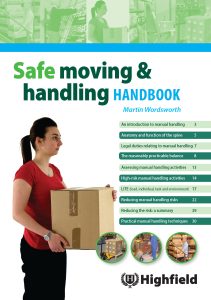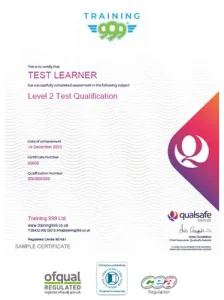Manual Handling Training
Courses / Moving & Handling
Manual handling injuries account for over a third of all workplace accidents. Without proper training, your staff face risks of serious injury, costly compensation claims, and potential legal action.
Our manual handling training across East Anglia equips your team with the knowledge and practical skills to handle loads safely. Delivered by an experienced NHS Paramedic with specialist qualifications, this RQF Level 2 certified course reduces workplace injuries and ensures full HSE compliance.
We combine 6 hours of online theory with 6 hours of hands-on practical training at your premises throughout Norfolk, Suffolk, Essex, and Cambridgeshire – giving your staff real-world skills they can apply immediately.
Manual Handling Training Overview
- Train up to 12 staff members simultaneously
- 6-Hours online, followed by 6-hours Face-to-face training.
- Access to E-learning portal sent via email to complete the E-learning prior to the Face-to-face training.
- Full colour Moving and Handling Manual with quick refrence key (E-PDF) downloaded via the E-learning platform.
- Taught at your premises.
- Safe Moving and Handling Level 2 (RQF) Certificate via PDF valid for 3 years**.
- Taught by a Subject Matter Expert.
Who Needs Manual Handling Training
- Suitable for any workplace requiring formal manual handling training
- Suitable for any person who needs training in moving and handling of loads or equipment
- Warehouse and factory workers involved in lifting, carrying, and moving stock
- Office workers who handle deliveries, move equipment, or rearrange furniture
- Delivery drivers and logistics workers loading and unloading vehicles
- Employees in manufacturing, agriculture, hospitality, and education sectors
- For more information on HSE manual handling training requirements, visit the official HSE guidance: https://www.hse.gov.uk/msd/manual-handling/training.htm
- Duration: 12 Hours
- Delivery: 6 hours online, followed by 6 Hours Face-to-Face on site training.
- Qualification: Safe Manual Handling Level 2 (RQF), Accredited by an Ofqual Regulated awarding body.
Manual Handling Training Course Content
Module 1: Understanding Manual Handling Risks
- Common manual handling injuries and their causes
- Statistics on workplace manual handling accidents
- Immediate and long-term health impacts
- Cost implications for employers and employees
- Real-world case studies from workplace incidents
Module 2: Legal Requirements and Responsibilities
- Manual Handling Operations Regulations 1992 (as amended)
- Health and Safety at Work Act 1974 obligations
- Employer duties: avoid, assess, and reduce risks
- Employee responsibilities and duty of care
- Legal consequences of non-compliance
- HSE enforcement and prosecution examples
Module 3: Risk Assessment and TILE Methodology
- Systematic approach to manual handling risk assessment
- Task factors: repetition, duration, postures, and movements
- Individual capabilities: age, health, training, and physical ability
- Load characteristics: weight, size, shape, and stability
- Environment considerations: space, lighting, flooring, and weather
- Using HSE risk assessment tools and filters
- Documentation and review requirements
Module 4: Biomechanics and Safe Movement Principles
- Understanding the musculoskeletal system
- Spinal anatomy and common injury mechanisms
- Centre of gravity and body mechanics
- Lever systems and joint forces
- Principles of ergonomic lifting and handling
- Recognizing personal limitations and capabilities
Module 5: Manual Handling Equipment and Aids
- Types of mechanical aids: trolleys, hoists, conveyors, and lifting devices
- Selecting appropriate equipment for specific tasks
- Proper use and operation of handling aids
- Pre-use inspections and safety checks
- Maintenance schedules and legal testing requirements
- When to use equipment versus manual techniques
Module 6: Practical Safe Handling Techniques
- Solo lifting techniques: planning, positioning, and execution
- Safe carrying methods and load distribution
- Controlled lowering and placing of objects
- Team lifting coordination: communication and synchronization
- Pushing and pulling techniques and best practices
- Equipment operation: hands-on training with workplace-specific aids
- Emergency procedures and incident response
Module 7: Workplace Application and Assessment
- Applying techniques to specific workplace scenarios
- Developing safe systems of work
- Individual capability assessment and personal lifting limits
- Ongoing monitoring and self-assessment
- Reporting hazards and near-miss incidents
- Creating a culture of manual handling safety
Note: This is a course overview. Contact us for detailed information about specific training modules and assessment requirements.
Safe Manual Handling Level 2 (RQF)* is Accredited by an Ofqual Regulated awarding body.
*Regulated Qualifications Framework (RQF) ** For each successful Learner


About Your Instructor
This course is delivered by an experienced frontline NHS Paramedic with specialist moving and handling qualifications, plus teaching and assessing credentials. As a former NHS Subject Matter Expert in Moving and Handling and Moving and Handling Lead for an NHS Trust, they bring unparalleled expertise to every session.
Our instructor emphasises the importance of TILE (Task, Individual, Load and Equipment) in risk identification and reduction, with a strong focus on biomechanics and ergonomics in the workplace. This combination of clinical experience, specialist qualifications, and NHS leadership provides your team with training grounded in real-world practice.
Have questions about what your business needs? Get in touch – we’re here to help.
Book This Course
Manual Handling Training Benefits
- Meet HSE legal requirements under Manual Handling Operations Regulations 1992
- Safe Moving & Handling Level 2 award (RQF)
- Train up to 12 staff members simultaneously
- Reduce the likelyhood of injuries - Learn risk reduction
- Onsite delivery minimizes disruption to business operations
- Expert instruction - Taught by qualified NHS paramedic instructors
Course Cost
The Safe Manual Handling training can be delivered at your venue.
A group of up to 6 learners can be trained on-site for £765.60.
Each additional learner is £95.00 up to a max of 12 learners with 1 trainer.
